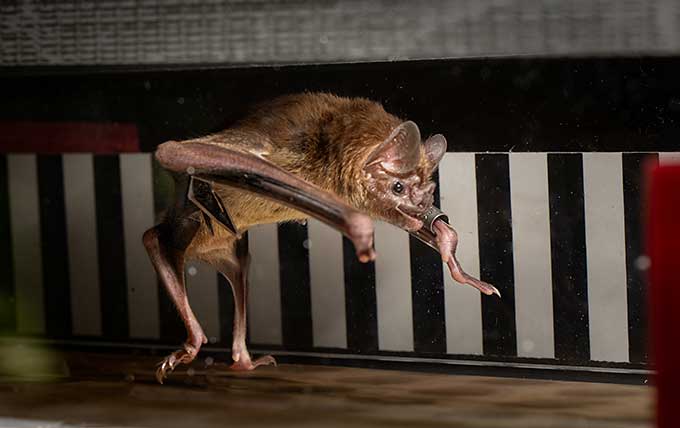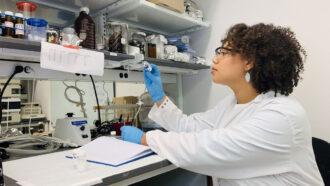
Animals
Putting vampire bats on treadmills revealed an energy-burning quirk
A mini gym for bats shows that vampire bats burn amino acids, rather than the carbs or fats other mammals rely on during exercise.
By Susan Milius
Come explore with us!

A mini gym for bats shows that vampire bats burn amino acids, rather than the carbs or fats other mammals rely on during exercise.

Rubisco is a key protein in the process of photosynthesis, which feeds plants — and, in turn, us.

Imari Walker says her journey as a scientist and science communicator lets her talk about and advocate for her passion.

Males eat more on long summer days, but females do not. Hormones may explain this difference.

Teamwork makes green-work! Collaborating scientists came up with an electrifying farming trick that could make sunlight optional.

A fat molecule's three long chains of carbon and hydrogen atoms repel water, stash energy and keep living things warm — even in the bitter cold.

The adolescent brain has a hard time resisting junk food. But high-fat, high-sugar diets can interfere with learning and pose risks to mental health.

As the famous book says, everybody poops. That’s 7.8 billion people, worldwide. For the 2.4 billion with no toilet, the process can be complicated.

Technology shows how microbes in the body respond to exercise. That helps scientists understand why those microbes keep athletes healthy.

Teens who gained excess weight showed less activity in the brain’s reward center when viewing or tasting foods with lots of fat.